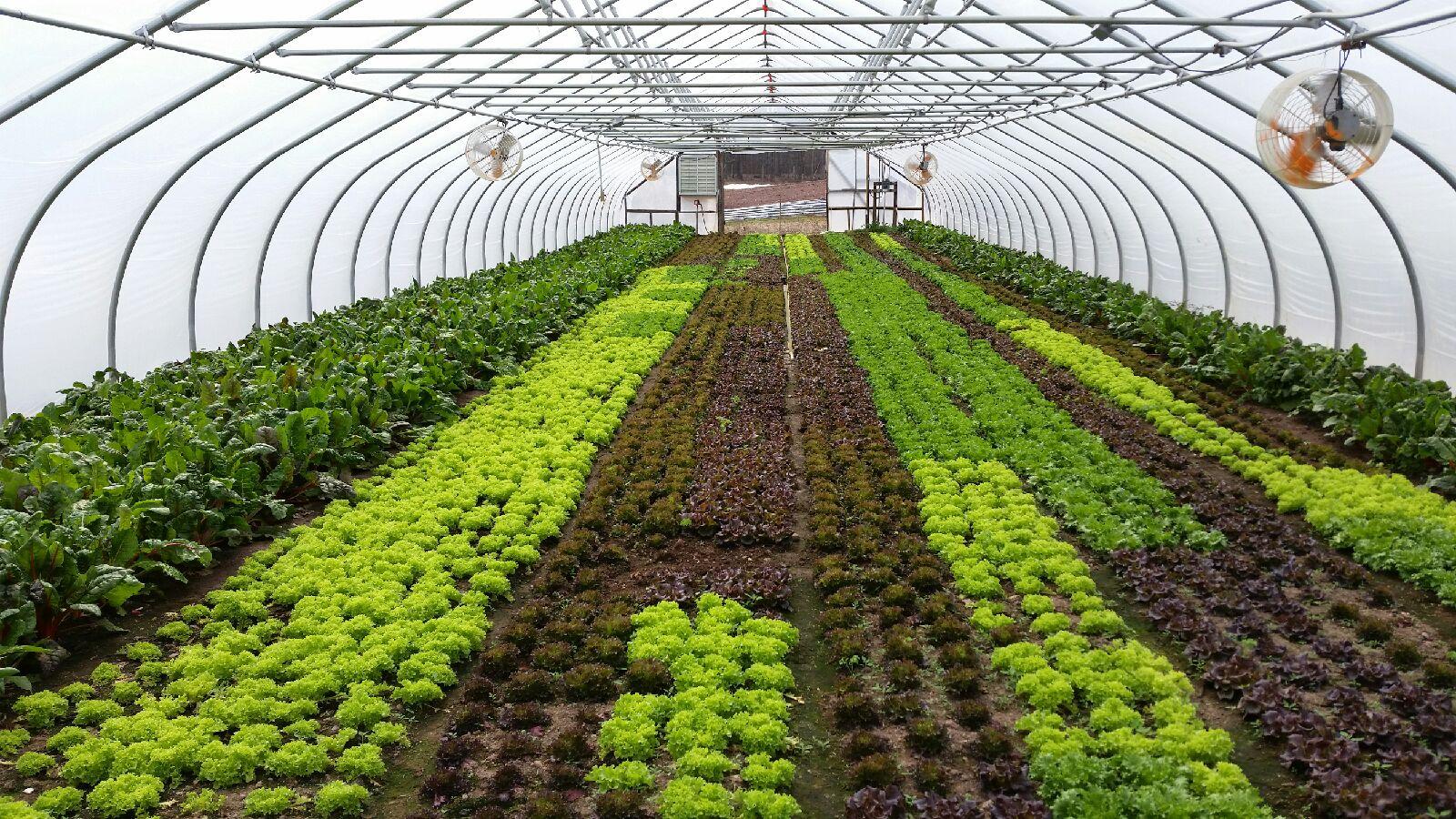


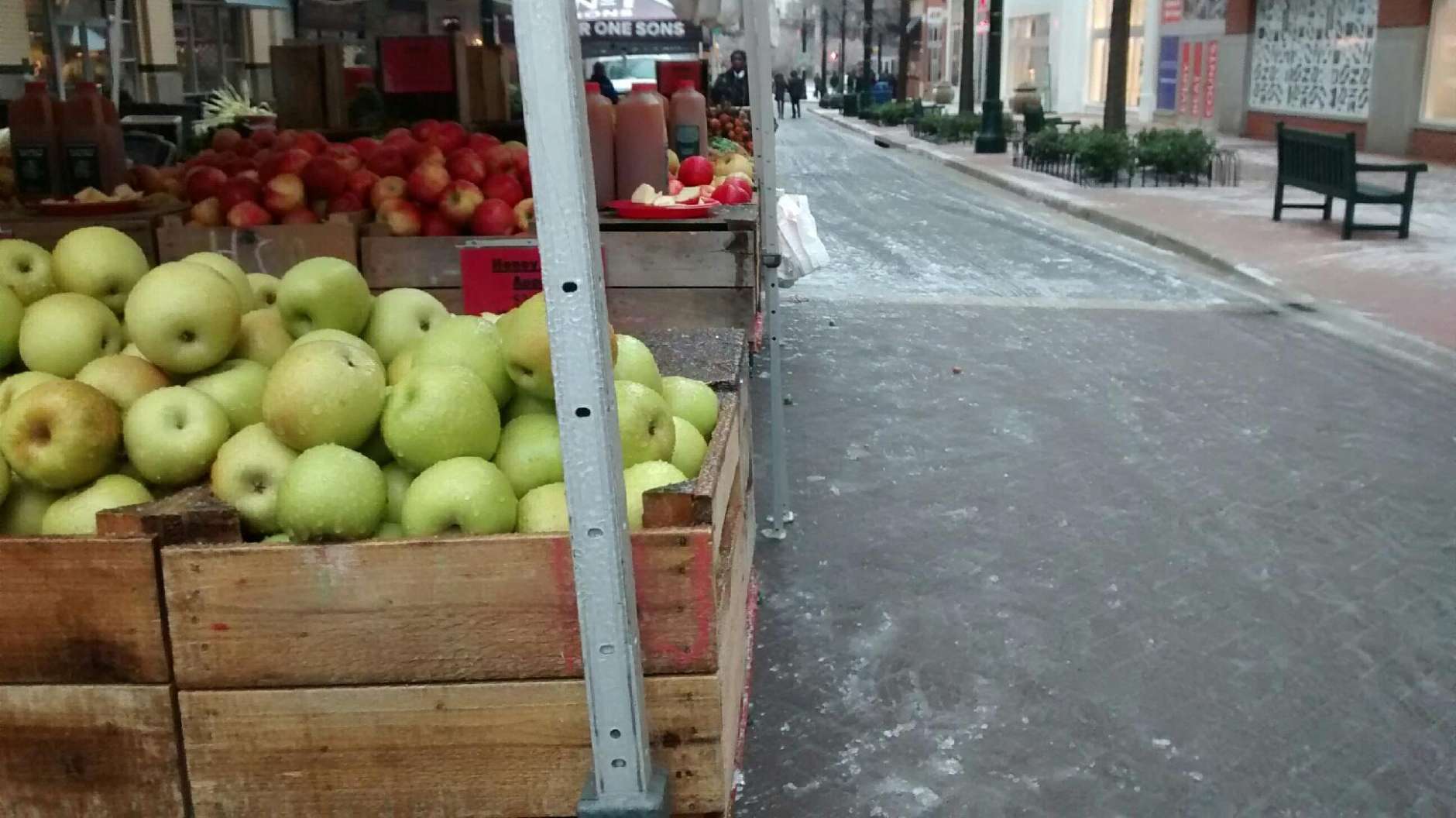
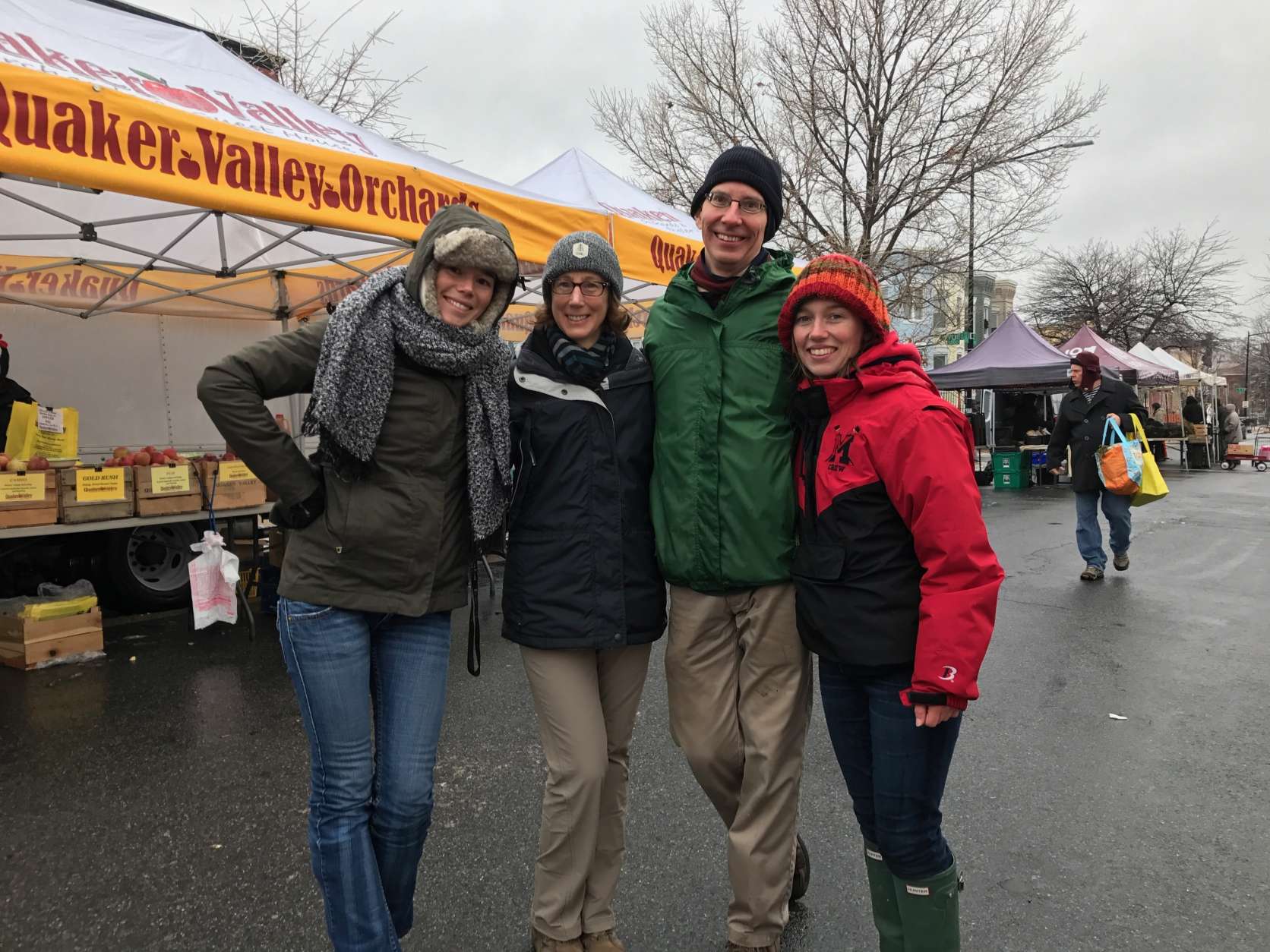
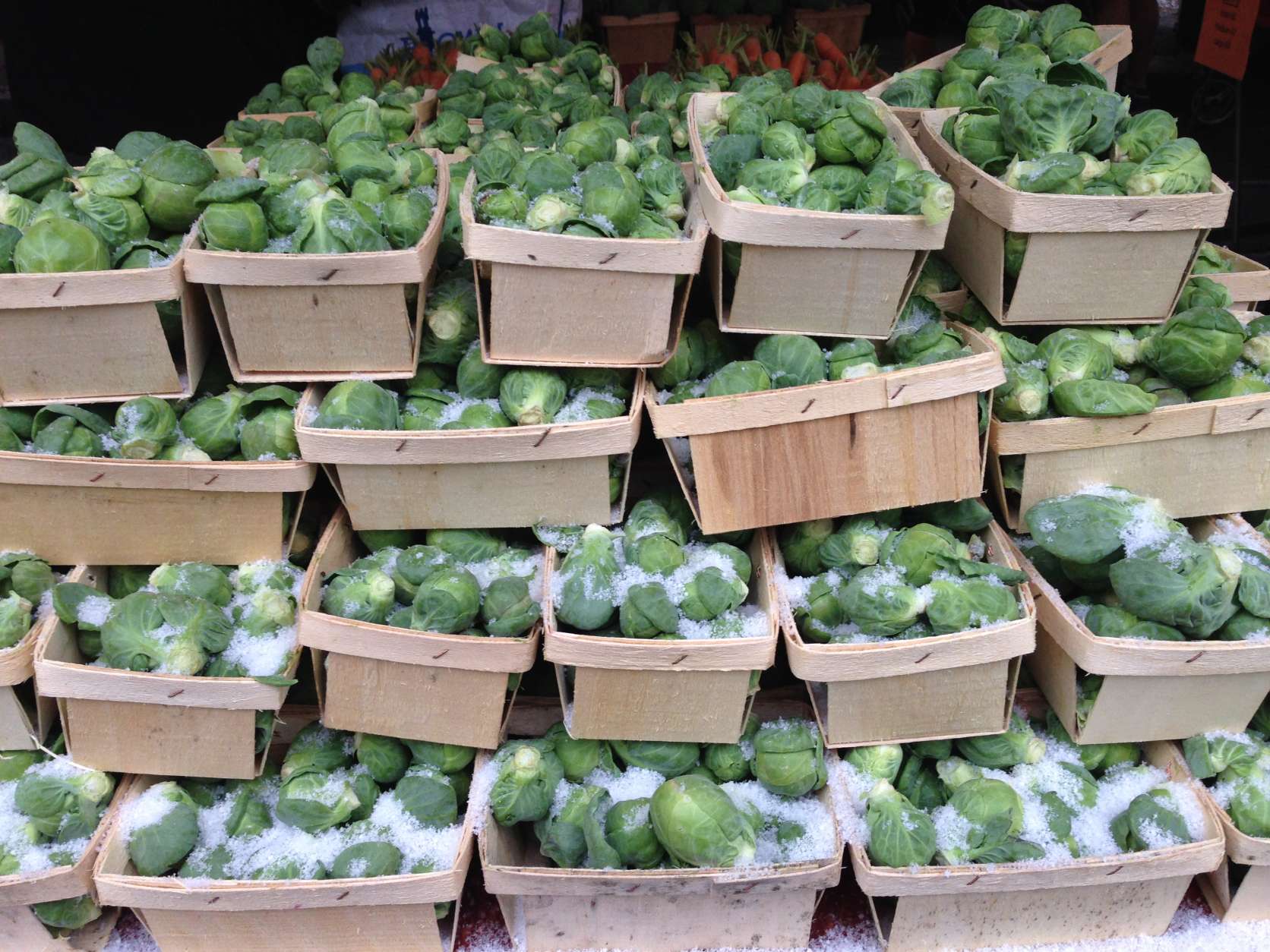
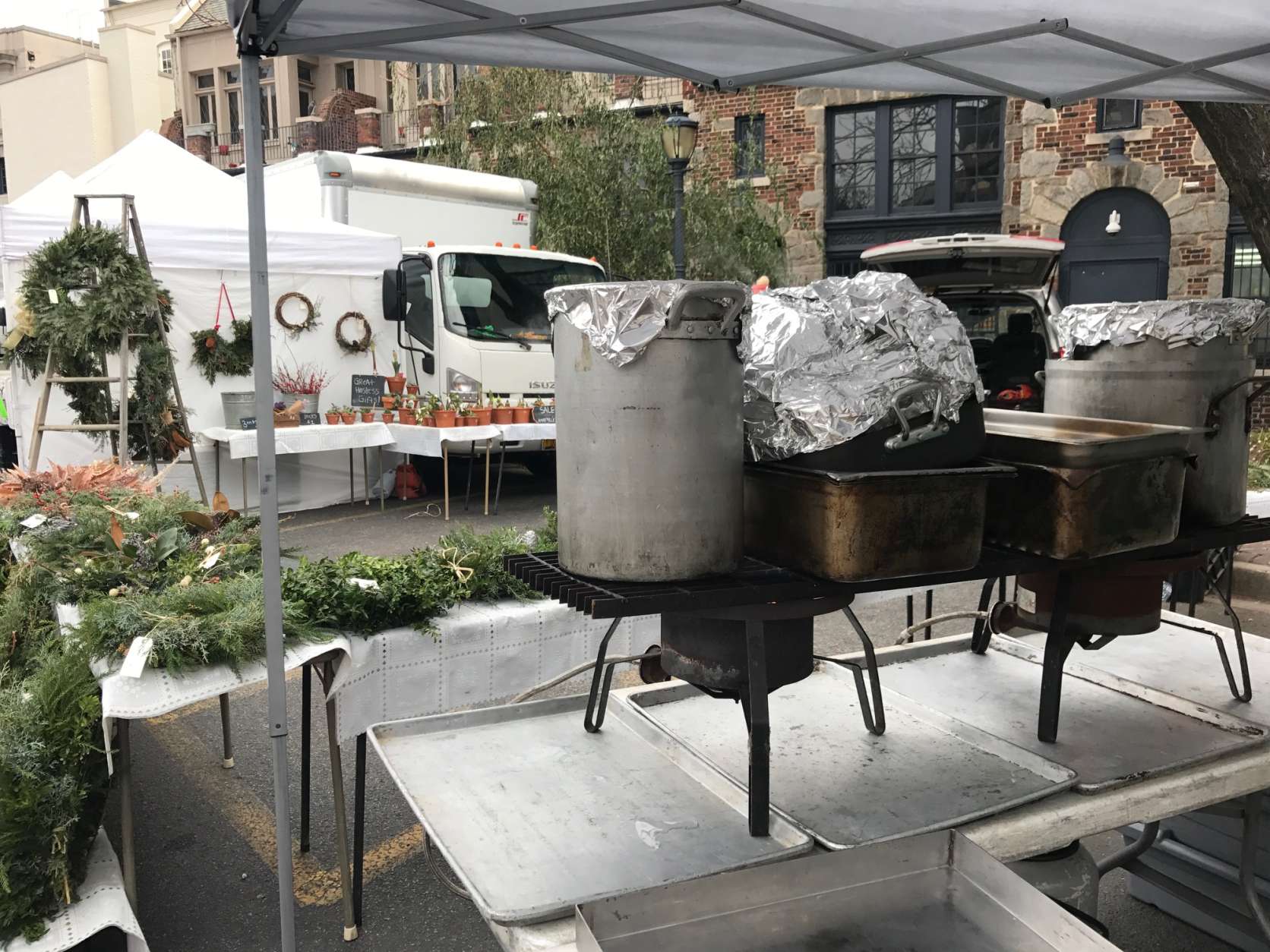
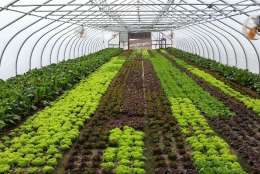
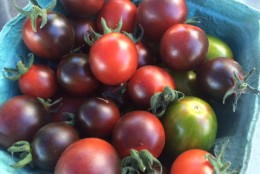
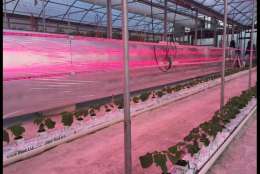

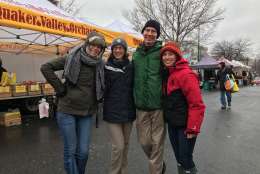
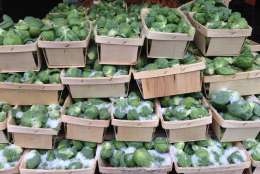
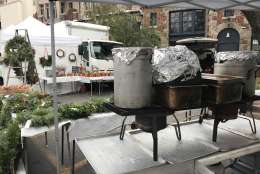
WASHINGTON — If you head down to the Dupont FRESHFARM farmers market on Sunday morning, you may notice something odd in the bins of locally grown fruits and vegetables. Many are overflowing with ripe tomatoes, leafy lettuces and crisp apples — even in the midst of winter.
Pointing to cartons of deep red tomatoes and miniature green cucumbers, Emily Zaas of Black Rock Orchard said, “It gives us something special to sell at market.”
Zaas is one of a handful of local farmers finding new ways to make money during the winter months when many field crops fall victim to freezing temperatures.
At her Lineboro, Maryland orchard, she and husband David Hochheimer have three heated greenhouses, which they installed to extend the traditional growing season of their products.
“These are heirloom varieties that we can sell at a price at market that’s worth heating [the greenhouses] with oil at home,” said Zaas about the last of her late-fall tomatoes.
Once they’re gone, she’ll start working on a February planting, which will be ready to sell at the market starting in April — several months before the region’s typical tomato season.
In addition to providing Zaas with something to sell during the cold-weather months, the greenhouses also help her to retain year-round employees. Tending for and turning over greenhouses is hard work, but it’s indoors, which is preferable to outdoor pruning when temperatures plummet.
In Hustontown, Pennsylvania, Jim Crawford of New Morning Farm uses four high tunnels, or unheated greenhouse-like structures that are covered in plastic, to ensure he has leafy greens to bring to the market during January, February and March.
The plastic covering traps heat inside the complex and helps to keep the ground-planted crops from freezing. And while this approach is one way to preserve what winter might otherwise destroy, high tunnels don’t necessarily guarantee a high yield.
“Even in the high tunnels where it’s warmer, the chard really won’t grow at all; the kales will grow a tiny bit; the spinach will grow; and the greens mix will pretty much grow. Everything else needs to be almost full size right now because it’s not going to grow anymore, just because there’s not enough light,” explained farm manager Jennifer Glenister.
Instead, the structures are more like a method of preservation.
“It’s like storing it while it’s still alive,” Glenister said.
High tunnels are not necessarily new, but Crawford says their use has exploded in recent years, right alongside the use of temperature-controlled cold storage facilities.
During the warmer months, Crawford plants more broccoli, cauliflower, kohlrabi and root vegetables than he expects to sell. Once the vegetables are harvested, he puts a portion of them in cold storage and sells them at later points throughout the year. This method is why many market-goers will see apples well into April.
“There’s a lot more vegetables that we can offer in the wintertime than people realize,” Crawford said. “It’s a pretty dead time [for farming], but it’s surprisingly lively at the market.”
This fall, Twin Springs Fruit Farm made a major investment to keep up its production of produce, no matter the season. The Orrtanna, Pennsylvania operation installed an LED lighting system in one of its greenhouses.
“The lighting becomes and issue. We only get eight or nine hours of light,” said Twin Springs’ Martin Jolin about winter’s shorter days. “[The LED system] greatly improves growing productivity.”
Jolin, who was selling tomatoes and eggplant in mid-December, estimates the farm spent $56,000 on four rows of lights. It’s a high cost, but he’s hoping to see a quick payoff — starting with an early-January crop of cucumbers.
Plants grown alongside the low-wavelength lights are expected to be healthier and produce more nutritious vegetables, Aubrey King, owner of Twin Springs, explained in a newsletter.
“The increased light should make plants which might otherwise be spindly and weak much sturdier and stronger, in many ways. Last year we had occasions when plants aborted their flowers during long stretches of cloudy weather; we hope to see an end to that where we are able to install lighting,” King said.
Whether it’s cucumbers, tomatoes, apples or greens, Danny Toigo of Toigo Orchards says the most important thing for farmers in the winter is having something for customers to buy.
He has a 5-acre greenhouse that grows 60,000 to 80,000 plants during winter.
“An extended growing season gives you another step. The more products you add … it just gives people another thing to buy when they’re here,” Toigo said.
And having something to sell during the winter months means those customers are more likely to stick with you during spring and summer, when fields are flourishing and competition for business is tough.
“The early-spring tomatoes roll into strawberries, and that’s when people really start coming out,” Toigo said about the benefits of being able to bring his greenhouse-grown tomatoes to the market in March.
“You’re not going to get rich farming in the winter, but you can keep people employed and you can make a little bit of a profit and you can keep your customers. And keeping the customers is the biggest thing.”







